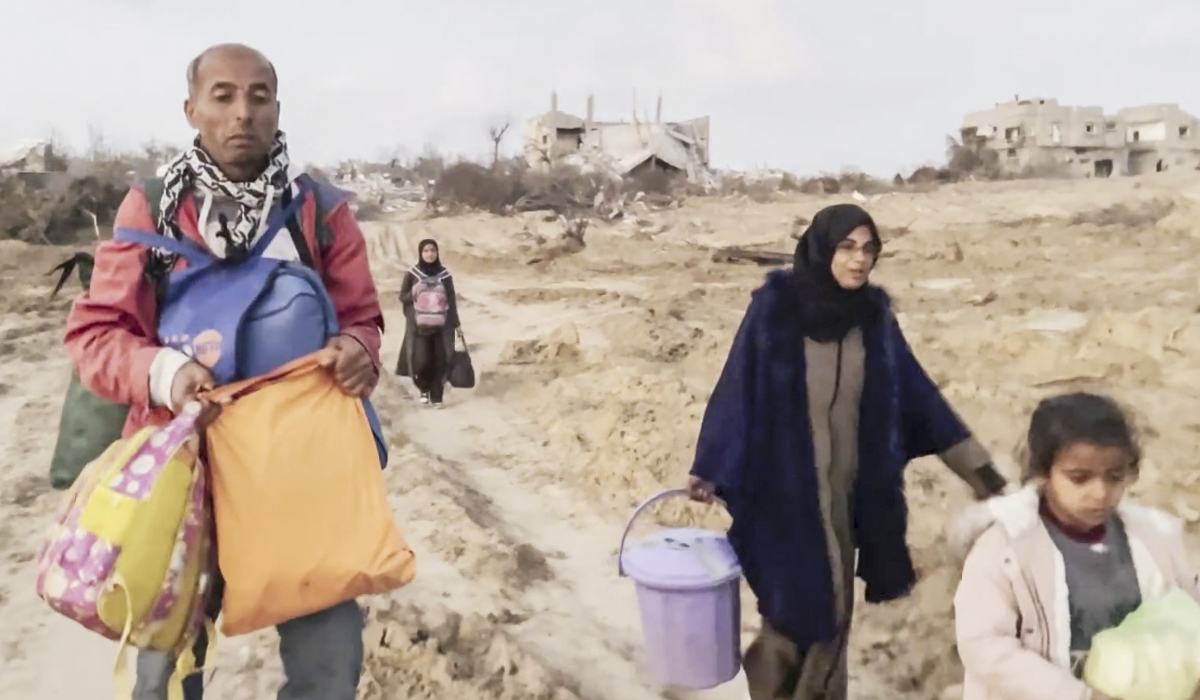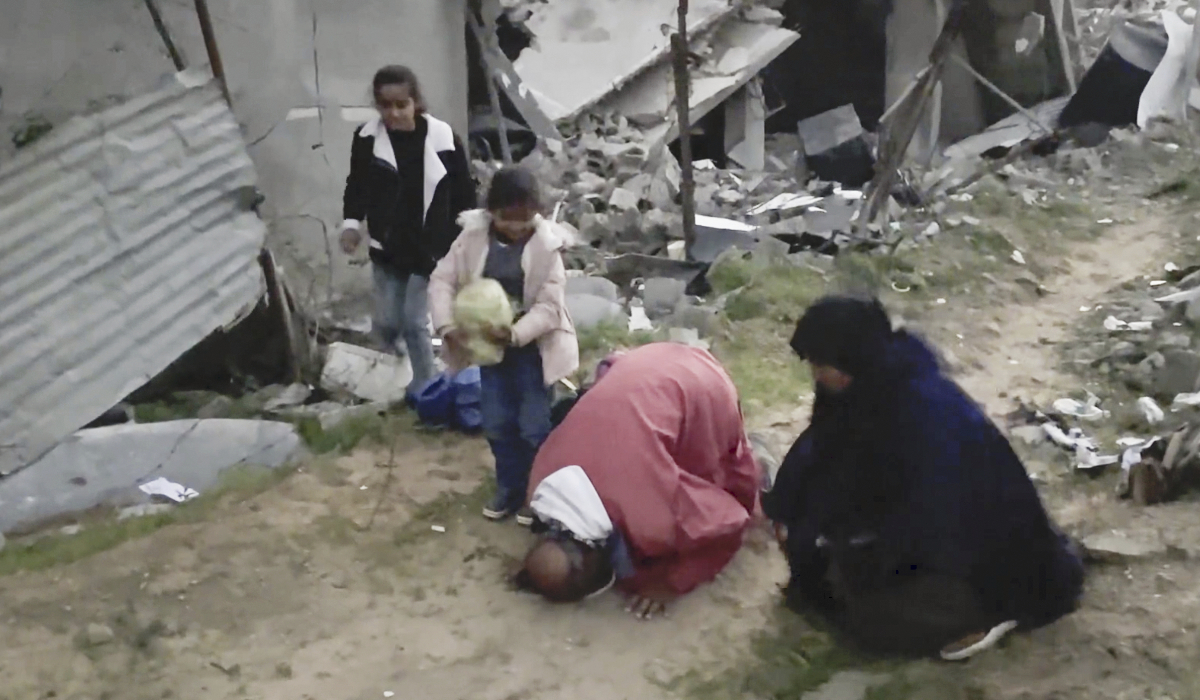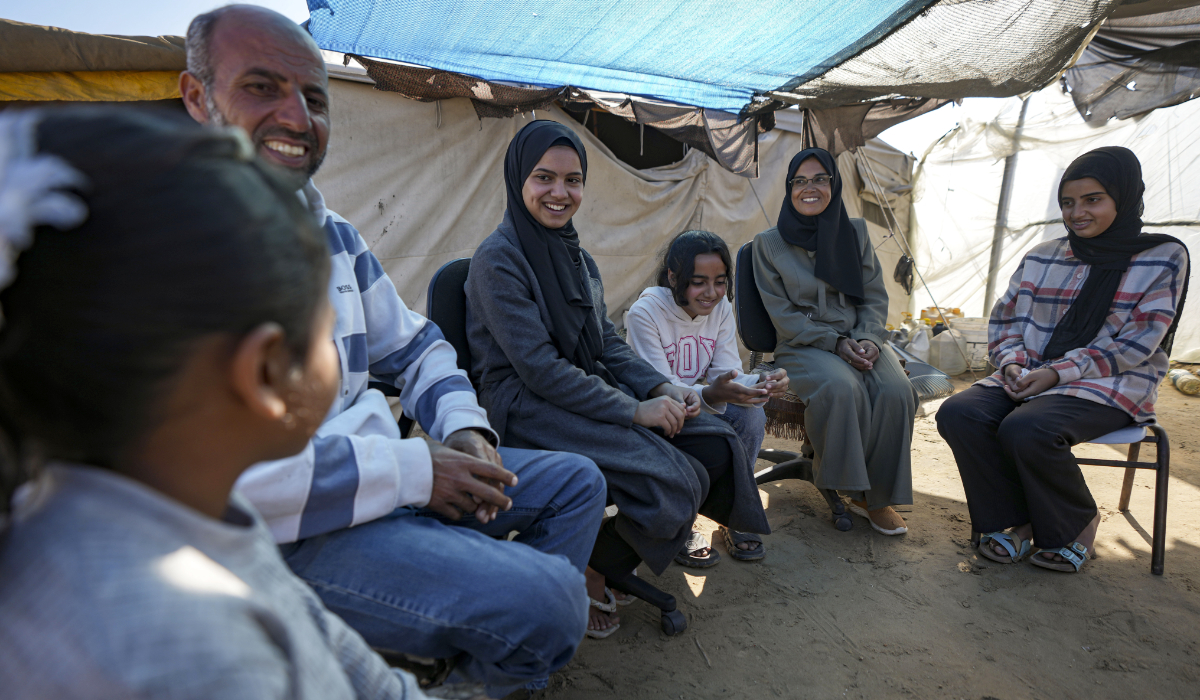BEIRUT: Israel expanded its aerial bombardment of targets in Lebanon, hitting areas both in and outside traditional Hezbollah bastions, as its troops battled militants across the border on Sunday.
In areas where Hezbollah holds sway, Israeli warplanes hit a marketplace in the southern city of Nabatiyeh on Saturday, and then a 100-year-old mosque in a village near the border on Sunday, according to Lebanon’s official National News Agency (NNA).
There have also been deadly strikes in other areas of Lebanon — one on a Shiite Muslim village in a mostly Christian mountain area, and another in north Lebanon, the health ministry said.
AFP footage shot from the northern Deir Billa area after the strike there showed rescuers and villagers digging with bare hands through rubble as smoke rose from the site.
The mayor of Kfar Tibnit, where the NNA said a strike destroyed a mosque, said he felt he had lost a beloved site that brought people together.
“It was a significant place because families used to gather in the square right next to it on special occasions,” Fuad Yassin told AFP, adding that the mosque was at least 100 years old.
Lebanon’s health ministry said strikes on three villages on Saturday killed 15 people.
Israel has alleged that militants use civilian infrastructure in Lebanon and Gaza to conduct operations — a claim the groups have denied.
The Israeli military said its 36th division continued “targeted and limited operational activity” in southern Lebanon against Hezbollah.
In a statement, it said Israeli jets had hit “Hezbollah launchers, anti-tank missile posts, weapons storage facilities, and additional terror targets.”
On the ground, soldiers had “eliminated dozens of terrorists.”
According to the NNA, Israeli forces have “escalated their attacks” on southern Lebanon, with “successive air strikes from midnight until morning” pounding several border villages.
Iran-backed Hezbollah said it clashed with Israeli troops who tried to “infiltrate” twice into a border village, sparking an hour-long battle.
It later said it shelled Israeli soldiers gathered in Maroun Al-Ras village.
Early Sunday, Israel said it intercepted five more projectiles fired from Lebanon as air raid sirens sounded.
The military said Hezbollah launched about 320 projectiles into Israel over the weekend of Yom Kippur, the holiest day of the Jewish calendar.
It also said roughly 280 “terror targets” were attacked in Lebanon and Gaza over the same period.
Israel on Saturday told residents of south Lebanon not to return home, and issued new evacuation warnings for several villages.
Red Cross paramedics hit
The Lebanese Red Cross said its paramedics were hit by a strike on Sunday while attending the site of an earlier attack in the south, leaving them lightly injured.
“Following the air strike on a house in Sirbin... Lebanese Red Cross ambulance teams were dispatched to the scene in coordination with” UN peacekeepers, the Red Cross said in a statement.
“As the team was searching for casualties to rescue, the house was hit for a second time resulting in concussions to the volunteers and damage to the two ambulances,” it said, adding the paramedics had sustained light injuries.
Jagan Chapagain, who heads the International Federation of Red Cross and Red Crescent Societies (IFRC) called for rescuers to be protected.
“We have said it before and today we say it again: the Red Cross emblem must be respected under International Humanitarian Law,” he said in a statement shared on X.
Targetting peacekeepers
Defense Minister Yoav Gallant told his US counterpart Lloyd Austin that Israel will continue to take measures to avoid any harm to UN peacekeepers deployed in southern Lebanon, the defense ministry said Sunday.
“Minister Gallant emphasized ... the IDF (Israeli military) will continue to take measures to avoid harm to UNIFIL troops and peacekeeping positions” in southern Lebanon, the ministry said in a statement following overnight talks between the pair. At least five peacekeepers have been wounded in recent days as Israeli forces fight against Hezbollah in southern Lebanon.
The peacekeeping mission, UNIFIL, has accused the Israeli military of “deliberately” firing on its positions.
UNIFIL said that, in recent days, its forces have repeatedly come under fire in the Lebanese town of Naqura where it is headquartered, as well as in other positions.
“Such actions must stop immediately and should be adequately investigated,” 40 nations that contribute to the force including Indonesia, Italy and India said in a joint statement on Saturday.
UNIFIL, which involves about 9,500 troops of some 50 nationalities, is tasked with, among other things, monitoring a ceasefire that ended the 33-day 2006 war between Israel and Hezbollah.
With no sign of a let-up in the violence, UN peacekeepers in Lebanon warned against a “catastrophic” regional conflict.
In an interview with AFP, Andrea Tenenti, spokesperson for the United Nations peacekeeping mission, UNIFIL, said he feared an Israeli escalation against Hezbollah could soon spiral “into a regional conflict with catastrophic impact for everyone.”
There is “no military solution,” Tenenti said.
Hamas sparked the year-long war in Gaza by launching the deadliest-ever attack on Israel on October 7, 2023, resulting in the deaths of 1,206 people, mostly civilians, according to an AFP tally of official Israeli figures.
The number includes hostages killed in captivity.
The health ministry in Hamas-run Gaza says 42,175 people, a majority civilians, have been killed since Israel’s military campaign began there. The UN acknowledges these figures to be reliable.
In support for its ally Hamas, Hezbollah started firing into northern Israel in October last year, triggering a near-daily exchange of fire that even before the current escalation had led to the displacement of tens of thousands of people.
In September, Israel expanded its focus to Lebanon, with Prime Minister Benjamin Netanyahu vowing to fight Hezbollah until Israelis displaced by the violence could return to their homes.
Since Israel began a wave of air strikes on targets around Lebanon and sent troops across the border, more than 1,200 people have been killed, according to an AFP tally of Lebanese health ministry figures, and a million others have been displaced.
Efforts to negotiate an end to the Lebanon and Gaza wars have so far failed.
Lebanese Prime Minister Najib Mikati said his government would ask the UN Security Council to issue a new resolution calling for a “full and immediate ceasefire.”
French President Emmanuel Macron repeated his call for a ceasefire and said Hezbollah must “immediately stop” attacking Israel.
In a show of support for Hezbollah — which Tehran arms and finances — the speaker of the Iranian parliament, Mohammad Bagher Ghalibaf, on Saturday visited the site of an earlier deadly Israeli strike.
A source close to Hezbollah said the strike had targeted the group’s security chief Wafiq Safa, something neither Hezbollah nor Israel has confirmed.
Ghalibaf’s visit, a signal of Tehran’s defiance, came after Israel vowed to respond to Iran’s second-ever direct attack, after an earlier missile barrage in April.
Tehran said the barrage was retaliation for the killing of top militants and an Iranian general.
Deeping push in Gaza
In Gaza, Israeli forces have focused on an area around Jabalia in the north, causing more suffering for hundreds of thousands of people trapped there, the UN agency for Palestinian refugees, UNRWA, said.
Israeli military spokesman Avichay Adraee posted an evacuation warning on X on Saturday for an area near Jabalia, saying it was “considered a dangerous combat zone.”
“There is no safe place, neither in the south nor in the north — everyone is at risk of death,” Gaza resident Sami Asliya, 27, told AFP.































